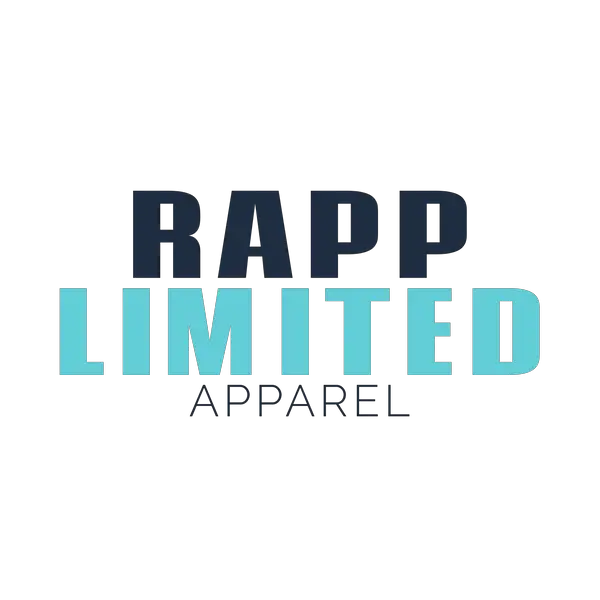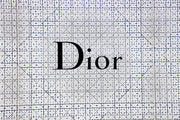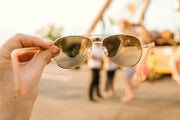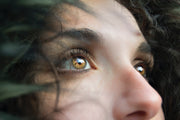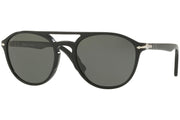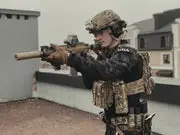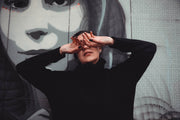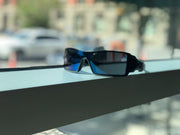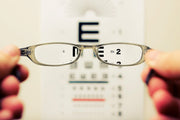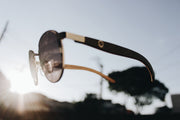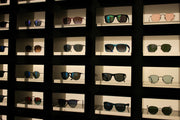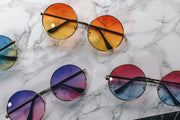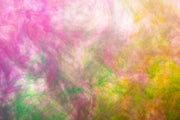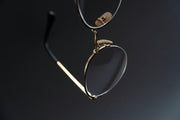Introduction
Parents are increasingly concerned about their children's screen use. The rise of virtual learning, combined with the widespread use of mobile phones, tablets, and computers in households, has resulted in a massive growth in screen time.
Eyewear businesses develop blue-light-blocking glasses with the aim to ease these problems. Different types of blue light filtering spectacles have become demanding for prescription and non-prescription glasses wearers. But do kids need anti-glare glasses?
This article will help you find the answer to your question. So dive in right now to find out!
Are Anti-Glare Glasses Good For Kids?
The anti-glare light coating is also known as blue block coating or digital block coating. This kind of computer lens treatment blocks the blue light and keeps the eyesight pleasant and healthy. For your information, blue light is available in all-digital displays and can damage your retinas.
Prescription or non-prescription eyeglasses with blue-light-filtering lenses are available in kid-sized models. They don't block entirely blue light. But they might cut your kid's exposure to blue-violet wavelengths by as much as 80%.
These blue light spectacles for kids include specific lenses that limit specific light rays. This perhaps protects children's developing eyes from digital eye strain. Blue light glasses can have a faint yellow tint to them.
According to Megan Lott, an eye doctor at Belle Vue Specialty Eye Care in Mississippi, parents might need to consider restricting time on screen for smaller children. Also, invest in blue light spectacles for those aged 12 and up. Or you can also buy these glasses for young ones who are staring at computers for hours a day.
Lott said she would prescribe a blue light filter for the youngsters. It’s because they spent so much time on their electronics.
Reduced exposure to blue light can benefit children's circadian rhythms and sleep patterns. Lessening screen time is the greatest way to do this. Besides, banning portable devices or TVs in the evening is impossible for many families.
That’s when a pair of anti-glare glasses comes in handy. Your kids will be protected from the obvious signs of digital weariness. It is also known as Computer Vision Syndrome (CVS) if they wear glasses with an anti-blue light coating.
- Headaches
- Blurred vision
- Eyestrain
In addition, your child usually engages in outside activities for hours or partaking in a sport with a lot of brightness, such as hanging out on the seaside or ice skating. So a decent pair of child's spectacles is also vital for shielding UV rays and blue light.
She also suggests polarized children's eyeglasses. These items can filter 100% of UVA and UVB rays.
Do Kids Need Anti-Glare Glasses?
Being parents and caregivers, we should understand that vision plays an important role in a kid's emotional and cognitive development, mainly in infants.
Whether or not your dearest requires AR coating is mostly determined by his or her glasses prescription. If your kid has high-index or polycarbonate lenses, you should carefully consider AR shielding. These glasses reflect more light thanks to the AR coating's capacity. It absorbs light and reduces glare to help counterbalance. Your children would surely benefit from enhanced sight and relaxation due to this.
But what if your kid's glasses aren't made of polycarbonate or have a high index? Is it still necessary to coat them in AR? Not essentially, but it's still something we should take into account.
Regardless of how much AR coating your little one needs, one point is certain. It minimizes eye strain, supports healthy eyesight over time, and improves the appearance of your child's spectacles.
When there is brightness on the lenses, it can be challenging to see the wearer’s eyes. The AR coating, on the other hand, reduces glare. This function allows you to easily see your children's eyes through the optic in person or in photographs.
Younger children suspect that others are having difficulty viewing them well. So they may become insecure. With AR glasses, your kids realize that others can see their eyes without difficulty. They can now feel confident and secure.
In general, AR coating makes donning eyeglasses a more pleasurable experience. Your kids should enjoy wearing their spectacles. They ought to be willing to wear their glass without feeling self-conscious.
AR coating improves vision and appearance, resulting in a more pleasant wearing feeling. As a result, this coating is very well worth the investment. Those wearing prescription lenses should give it a try.
Which Age Should A Kid Get Anti-Glare Glasses?
This aspect is a little complicated with kids. Anti-reflective optics are usually not required for infants and youngsters. They don't drive or use laptops frequently. And they don't sit in workplaces or classrooms with poor overhead lighting, so the visual aspect isn't as important to them.
We highly recommend that school-aged children (ages five and above) get anti-reflective spectacles. It’s because they spend more time in class with low-quality lights and use laptops and tablets (as well as watching TV or going to the cinema) than infants and toddlers. School-aged children may also prefer eyeglasses that help them look and feel their best. And anti-reflective glasses surely help in this regard.
Final Thoughts
So, do kids need anti-glare glasses? YES, why not - as this is one of the must-haves for your child's spectacles.
The anti-reflective layer is a lens coating that is baked in. It is recommendable for youngsters because it provides better, clearer eyesight and has been shown to relieve eye strain.
Anti-reflective coatings help children in the classroom, doing assignments, or utilizing technology devices. Certain anti-reflective treatments also include blue light filters. This layer shields your child's eyes from the harmful rays that damage human health.
